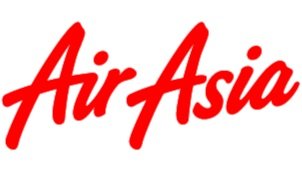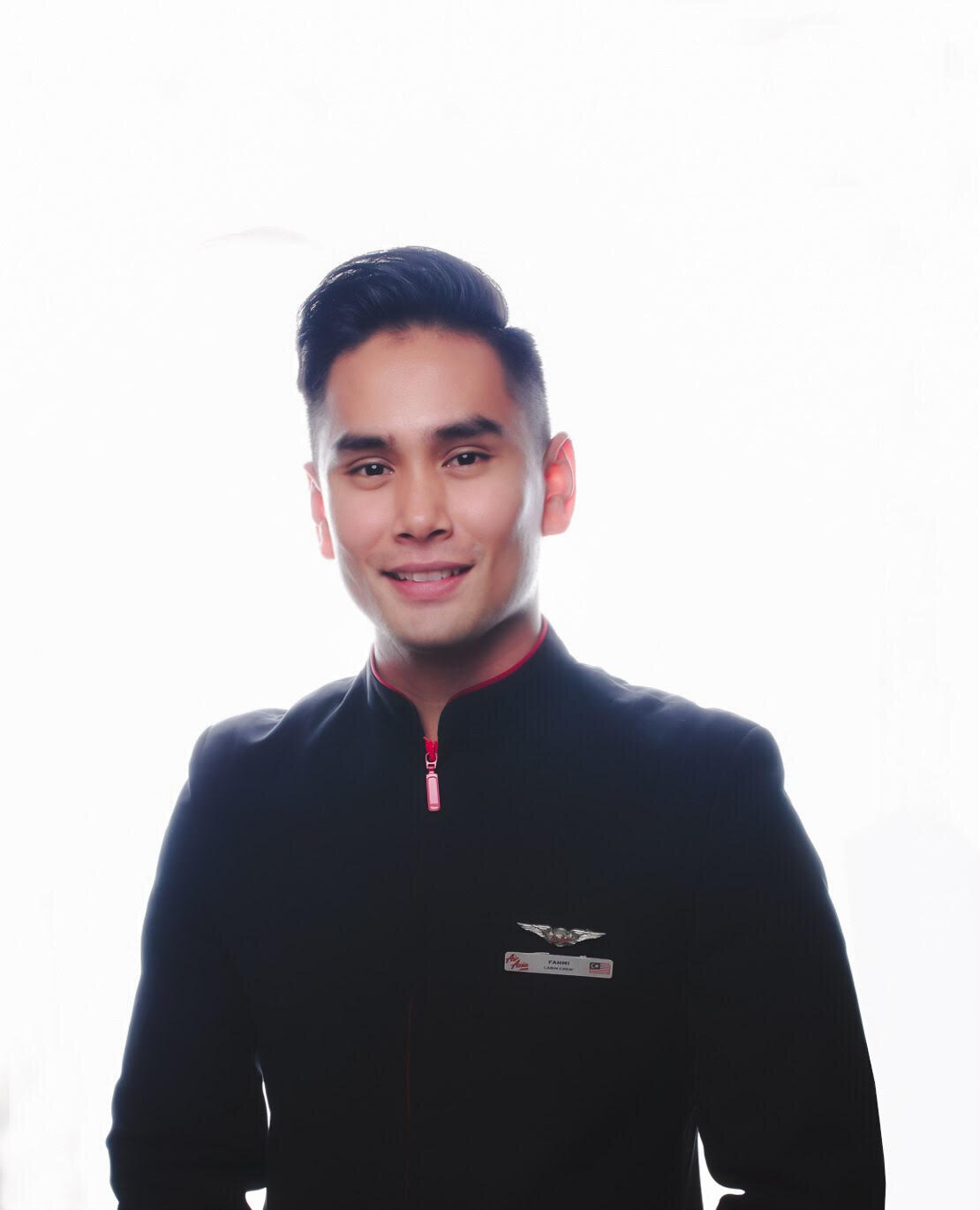#InThisTogether - Mission repatriation: Iran, with Cabin Crew Fahmi Esmail
On 21 March 2020, a special AirAsia flight chartered by the government of Malaysia departed for Tehran, Iran to repatriate stranded Malaysians and citizens from neighbouring countries following the border closures of these countries due to the Covid-19 outbreak.
We caught up with one of the AirAsia crew members Fahmi Esmail who was part of the operation to find out what took place behind the scenes of this special mission.
1. How do you feel when you found out that you were selected to operate the flight?
I had mixed feelings when I first heard that I will be operating the rescue flight to Tehran. I hesitated initially because of the state of the pandemic in Iran but at the same time, this is one of the rare chances where I can actually serve my country and help my fellow Malaysians.
I called my parents later that day and it was my father’s encouragement that convinced me. “Go and bring our fellow Malaysians home”, he said. He spoke with such conviction, it startled me. But all of us know how serious the pandemic is and we can only imagine how scary it must be for our fellow Malaysians who were stranded in a foreign land as the world was closing down.
I knew I had to do it, and it was the best decision ever!
2. Any preparation you have to do prior to departure?
We only have around three days from being informed to the date of operating the flight.
Besides making sure that I am well rested and physically fit to operate the flight, just like how I would for any other normal flight, those of us who were selected to take part in this mission also received some additional reading material to study at home.
I read about some of the precautionary steps to be taken throughout the operation and a manual on wearing the Personal Protective Equipment (PPE), which are layers of protective clothing made up of a plastic gown, head cover, shoe covers, gloves, mask and goggles to be worn throughout the rescue mission.
I also found out that instead of our usual uniform, we will be wearing polo tee and pants underneath all the layers of PPE to ensure that we can be more comfortable and move around easier.
Briefing onboard.
3. On the day of the flight, do you feel any difference from your usual operation?
It was very different from our usual operation and to be honest, quite daunting!
On the day of the flight, we had to go through a few meetings and briefings with the National Disaster Management Agency (NADMA) and the Ministry of Health, as well as a few other government agencies who are taking part in the mission.
We were then introduced to the medical and government officers who would be joining the flights, and all of us had to go through a detailed briefing on donning the PPE again.
Then we all moved together to the aircraft. That moment somehow reminded me of an iconic scene from an old movie I saw called “Armageddon”, where the characters walked together in their spacesuits to a spaceship ready to save the world!
I joked about it with my colleagues, but in all seriousness, we were all ready to bring our Malaysians home safely!
In my “spacesuit”.
4. Any other special preparations you have to do on the flight?
About two hours before arriving at Tehran, we started preparing the cabin for our guests.
We had to split the aircraft cabin into three zones - Green, Yellow and Red by marking the floor with tapes. We marked the seats too, to indicate which can be seated and which seats were to be left empty to space out our guests.
Instead of the usual meal service using our carts during the flight, the food and water for our guests on this flight were all pre-packed and placed in the pocket of their seats to minimise social engagement.
While we were doing these preparations, I noticed that the medical team onboard were busy preparing their equipment too.
Once all preparations were done, all of us changed into our full PPE gear with a thorough inspection by the medical team members. Then we quietly waited for our arrival at Tehran with full anticipation.
5. What happens when the aircraft lands at Tehran?
Once the aircraft landed at Imam Khomeini International Airport at Tehran, we had about one hour to refuel the aircraft and board our guests before we returned home. None of the crew members was allowed to leave the aircraft, so we just stayed in the cabin to welcome our guests.
We had a total of 55 guests on that flight, of which 46 are Malaysians.
As I bid them welcome, I could tell that they were tired and couldn’t wait to get home.
6. How was your flight home? Did you manage to talk to any of the guests?
Our flight home was relatively calm.
We were advised by the government agencies to not have any contact with the guests, therefore none of the cabin crew could engage with the guests besides bidding them welcome. Only the medical team members could attend to their needs onboard.
There were many other rules in place, such as we must always be facing our guests at all times as the weakest part of our PPE is at our back. We were also not allowed to use the toilet at all throughout the flight as we could risk contaminating the PPE, so we had to plan our meal and limit our water intake.
Besides that, as we were allocated into the three controlled zones in the cabin, we are not allowed to cross into other zones also. But all these rules were for the safety and wellbeing for everyone onboard, so all of us understood and respected that.
7. How does it feel as you arrive back at Kuala Lumpur? Were there any protocols upon arrival?
All of us heaved a huge sigh of relief when the aircraft landed at Kuala Lumpur, and I could see the joy on the faces of our guests!
We disembarked everyone on board following the zones allocated to us, Green Zone consisting of pilots and some crew members were disembarked first, followed by the Yellow Zone where engineers, government officials and more crew members were, then lastly the Red Zone where all the guests, medical team and the last batch of crew members were.
Upon disembarkation, all of us had to go through a decontamination process by the Hazmat (Hazardous Materials) team from Bomba Malaysia (Fire and Rescue Department of Malaysia) - the same team which would also disinfect the aircraft that flew us in.
Arrived safely!
8. How was your quarantine period?
Right after the decontamination process at the airport, we were all transported to a designated quarantine centre for health screening. Then we had to stay at the facility and wait there for two days for the test result.
Alhamdulillah, the test result came back good, so we were allowed to continue self-quarantine at home.
It was not easy at first to be confined at home, but I quickly adapted to it after a day or two. I am very blessed to have my family and friends who could help me do some grocery shopping and send them to me at the door. The food delivery services available online helps too!
I kept myself busy during the quarantine. I love singing, so I kept myself entertained by recording song covers at home. I work out every day too to keep in shape! I do miss the gym and running outdoors, but for now, an exercise mat at home does the trick.
I also have my support system - my friends and family, whom I talked to over the phone almost every day. They were always there to keep me sane and sorted.
I tried to stay active during the quarantine period.
9. What is your most memorable moment from this operation? Would you do it again?
The entire operation was very memorable, and I would do it again in a heartbeat.
When I was quarantined at home, news about the rescue flight came out in the media and I posted a photo of myself in PPE on my Instagram account to commemorate the mission. Since then, I have received so many calls, text messages and DMs (Direct Messages) from lovely Malaysians who thanked me for bringing our fellow countrymen home, some of them were the families of the repatriated guests!
It made me immensely proud, but I am only just a part of a huge team of a few hundred behind this operation, and all of them have contributed much more to the mission behind the scenes than me!
I would like to personally thank NADMA, Malaysia’s Ministry of Health, the medical officers, Bomba Malaysia, my superiors and management at AirAsia, my fellow crew members and everyone involved for giving me the chance to be a part of this special mission, as well for their continuous contributions to fight this pandemic for our country.
This is definitely an experience I will remember for a long time. :)
Cabin Crew Fahmi Esmail





